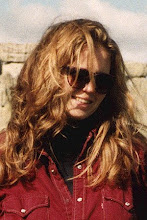
"¡No quiero morir! - I don't want to die!" shouted the young Mexican as the waves around our little boat got higher and higher. We raised our glasses filled with warm beer and toasted him back, trying not to spill a single drop.
 So far, the trip on the Beagle Channel had been nice but uneventful. We had visited a rocky island and watched sea lions, then we circled the small lighthouse alongside another five boats. Later we stopped off at Bridges Island and had a quick wander around looking at the Patagonian and Fueginian (we were in Tierra de Fuego after all) fauna. The mighty south-westerly wind was tearing at our windproofs and our guide crouched down to show us how the indigenous people had sheltered from it between the bushes. If it hadn't looked incredibly stupid, we would have given it a shot. They didn't have five layers of Gore Tex and fleece to keep them warm, in fact, they were just covered top to bottom in sea lion grease. Only when the early missionaries forced civilisation upon them, their health began to deteriorate. Once their clothes got wet, they became ill - oh, and the obligatory viruses they hadn't been used to, didn't help either. Interesting fact was, that only the women would swim in the Beagle Channel and the entirely naked men didn't ...
So far, the trip on the Beagle Channel had been nice but uneventful. We had visited a rocky island and watched sea lions, then we circled the small lighthouse alongside another five boats. Later we stopped off at Bridges Island and had a quick wander around looking at the Patagonian and Fueginian (we were in Tierra de Fuego after all) fauna. The mighty south-westerly wind was tearing at our windproofs and our guide crouched down to show us how the indigenous people had sheltered from it between the bushes. If it hadn't looked incredibly stupid, we would have given it a shot. They didn't have five layers of Gore Tex and fleece to keep them warm, in fact, they were just covered top to bottom in sea lion grease. Only when the early missionaries forced civilisation upon them, their health began to deteriorate. Once their clothes got wet, they became ill - oh, and the obligatory viruses they hadn't been used to, didn't help either. Interesting fact was, that only the women would swim in the Beagle Channel and the entirely naked men didn't ... 
Our nutshell, the Ché Guevara, was still bobbing up and down as we handed our glasses over for a refill when the unimaginable happened: the engine stalled. Quick glances where exchanged as the captain climbed into the hull. The engine was not going to come back on. This time it was my turn to shout ¡No quiero morir! - and it was not well received. Eleven pairs of eyes told me to keep stumm. After some frantic phone calls, help was on its way. A yacht on the way to Ushuaia towed us back home but it was a rocky ride. The waves battered the boat and the beer we had just had, made itself felt. And in the harbour, we had to change into Ché's sister ship, the Tango. Oh, you know when you're been tangoed. ;-)























